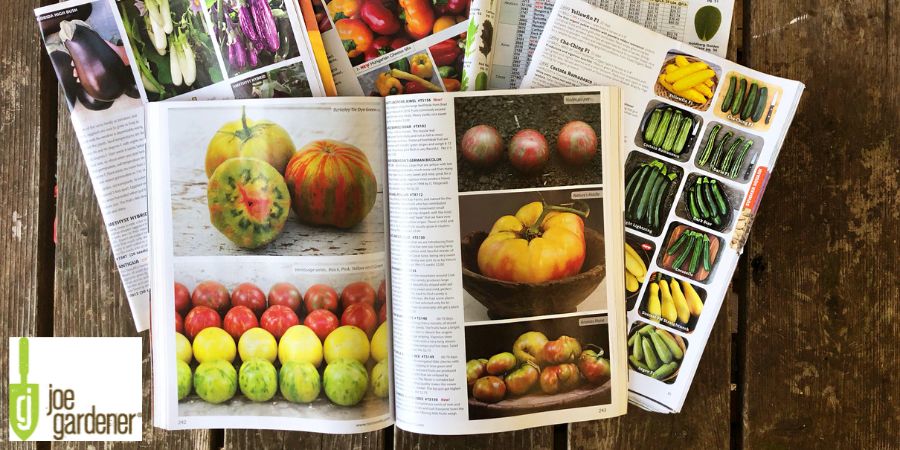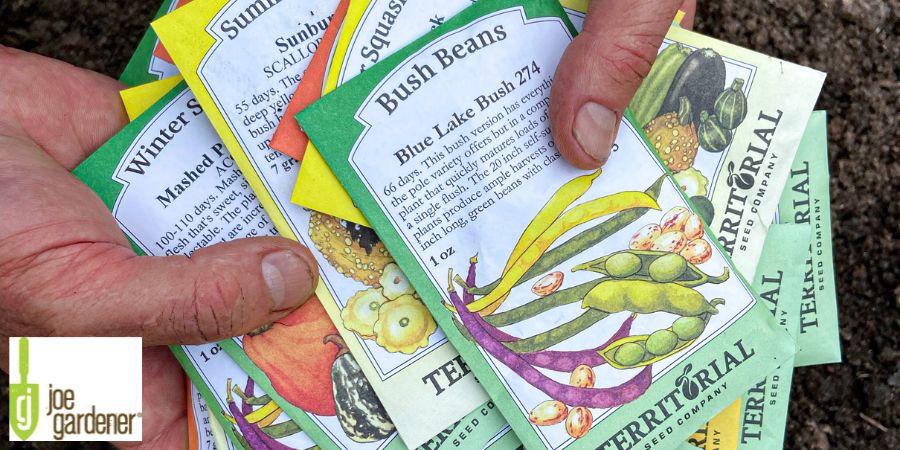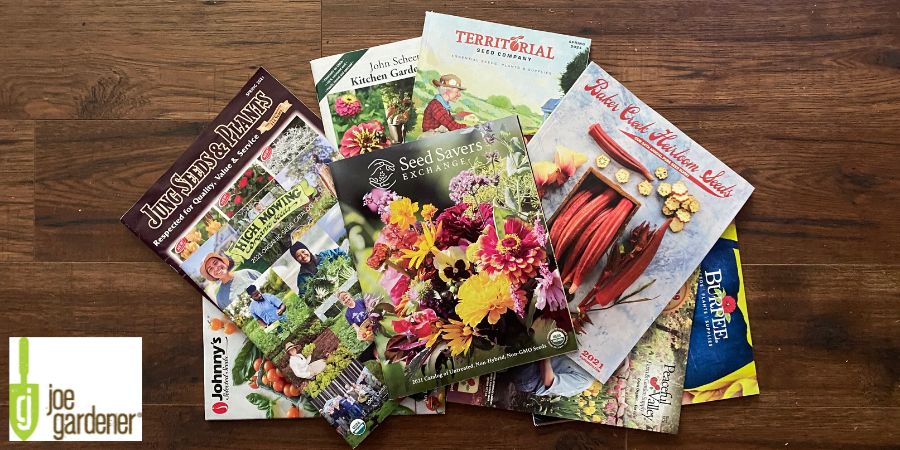Seed Buying Catalog and Online Buying Do’s and Don’ts
- Gardening Expert and Host of Growing a Greener World®January 28, 2023
Now’s the time of year when my mailbox fills with seed catalogs from the many seed companies I have ordered from in the past. It’s something I look forward to each winter, even though I already have a stash of more seeds than I know what to do with, including seeds I’ve purchased, been gifted, or saved myself from the crops in my garden. Still, browsing seed catalogs, whether they be hard copies or online, always makes me excited for the gardening year ahead.
Whether you are new to shopping for seeds from catalogs or you’ve been doing it for as long as I have — longer than I’d like to admit! — I have some seed shopping do’s and don’ts to share with you that I think you’ll really appreciate.
Do Practice Restraint. Don’t Overbuy Seeds.
The most disciplined among us readily become indulgent when it comes to gardening. That’s why overbuying is the No. 1 mistake seed shoppers make. I liken it to going to the grocery store on an empty stomach or getting in the buffet line when you’re starving. Seed packets, individually, are cheap, even when it comes to some of the most sought-after seeds — so why not go all out? Believe me, even veteran seed shoppers are guilty of overbuying.

On the range of challenges that gardeners can run into, having more seeds on hand than they have room to sow is not all that bad. However, overbuying can lead to waste and disappointment. Although seeds can be stored and saved, in time, their germination rate will decrease until the whole packet of seeds is no longer viable. Sowing old seeds only to learn they are duds can set gardeners’ plans back days or weeks.
Rather than buying extra seeds that will eventually be tossed out, endeavor to practice restraint. Take those dollars saved on seeds and invest in improving your soil instead. If you have a dollar to spend on your garden, your best bet is to spend 90 cents on your soil. Adding compost and organic fertilizer to your soil will lead to better results in your garden than buying seeds that never get planted.
Do Consider Appropriate Growing Conditions for Seeds. Don’t Buy for Beauty Alone.
Seed catalogs are full of pictures of pretty flowers that make the seeds so tempting. You feel like you just have to have them. However, if those flowers are not suited to your hardiness zone and local conditions, those are not the flowers for you.
Always check what zones a plant can tolerate before pressing the order button. Also, consider if it likes it wet or dry, sandy or clayey, sunny or shady, acidic or alkaline.
It’s fun to experiment and push boundaries, but no matter how good they look in the catalog, lilacs won’t thrive in the Deep South, nor will blueberries prosper in alkaline soil.
Also, keep in mind that the images of flowers in catalogs depict them at their very best. The flowers are grown under ideal conditions by expert horticulturists and shot by professional photographers. It can be easy to imagine the flowers will look that good in your garden, but in reality, if the growing conditions are anything less than perfect, the flowers will never look as good as they do in a catalog.
Do Plan Ahead. Don’t Bite Off More Than You Can Chew.
Coming up with a plan before opening the first seed catalog will go a long way toward ensuring you won’t bite off more than you can chew.
Measure the garden beds you intend to use and calculate how many plants you can actually hope to fit in them. When you have this perspective, it’s much easier to hold back when you want to add just a couple more packets to your shopping cart.
Aside from how much space you have available, think about how much time you will have available. Can you really devote that many hours each week to sowing seeds, transplanting, and maintenance? Gardening should never feel like a burden or chore, so keep your plans manageable to fit your lifestyle and schedule.
Do Find Trusted Seed Companies. Don’t Order from Fly-by-Night Sellers.
While shopping — especially while shopping online — if you see a deal or a product that seems too good to be true, it probably is. There are many seed sellers on popular online marketplaces that deliver seeds that are not what they were purported to be and may not even be viable when delivered.
As much as I try to be a thrifty gardener, I avoid “bargains.” You get what you pay for, and in the long run, buying from reputable sellers always proves to be the right way to go.
Find out which catalogs the gardeners in your area use, and take their recommendations. There are many national seed companies but also several regional companies that have developed seeds that are especially reliable in your part of the country.
Do Start Small. Don’t Go All-In.
If you can’t get a good read on a seed company but would still like to try its seed offerings, make your first order small. Don’t bet your entire gardening season on an unknown seed supplier. If the company’s seeds do meet or exceed your expectations, you can always buy more seeds from that seller the following year.

Do Consider Shipping Costs. Don’t Overpay.
Some seed companies offer flat-rate shipping, while others will charge more to ship based on the weight of the shipment or the quantity of the order. These days, many companies will incentivize you to buy more seeds by offering free shipping if your order meets a certain dollar threshold.
Free shipping is a double-edged sword. The savings is nice, but you may also order more than you originally intended simply to attain that free shipping — and that can wipe out any savings. If you run into this conundrum, find another gardener to join in on your order. Alone, you may not qualify for free shipping or a volume discount, but with a friend or two added to the mix, you can all get a better deal.
Do Ask Questions. Don’t Stick with an Unresponsive Seller.
If you have questions about a seed variety or the ordering process, give the seed company a ring before you buy. If you can’t get in touch with customer service or find their help isn’t helpful at all, it’s time to move on to a different seller. Poor customer service is a very bad sign, and if you can’t get answers before placing an order, just think of how much trouble it will be after you have already made your purchase and run into a problem.
I hope reading my do’s and don’ts has left you feeling more confident about choosing a seed vendor and ordering seeds. And if you find getting a seed catalog in the mail exciting, I know how thrilled you’ll be when the seeds arrive.

